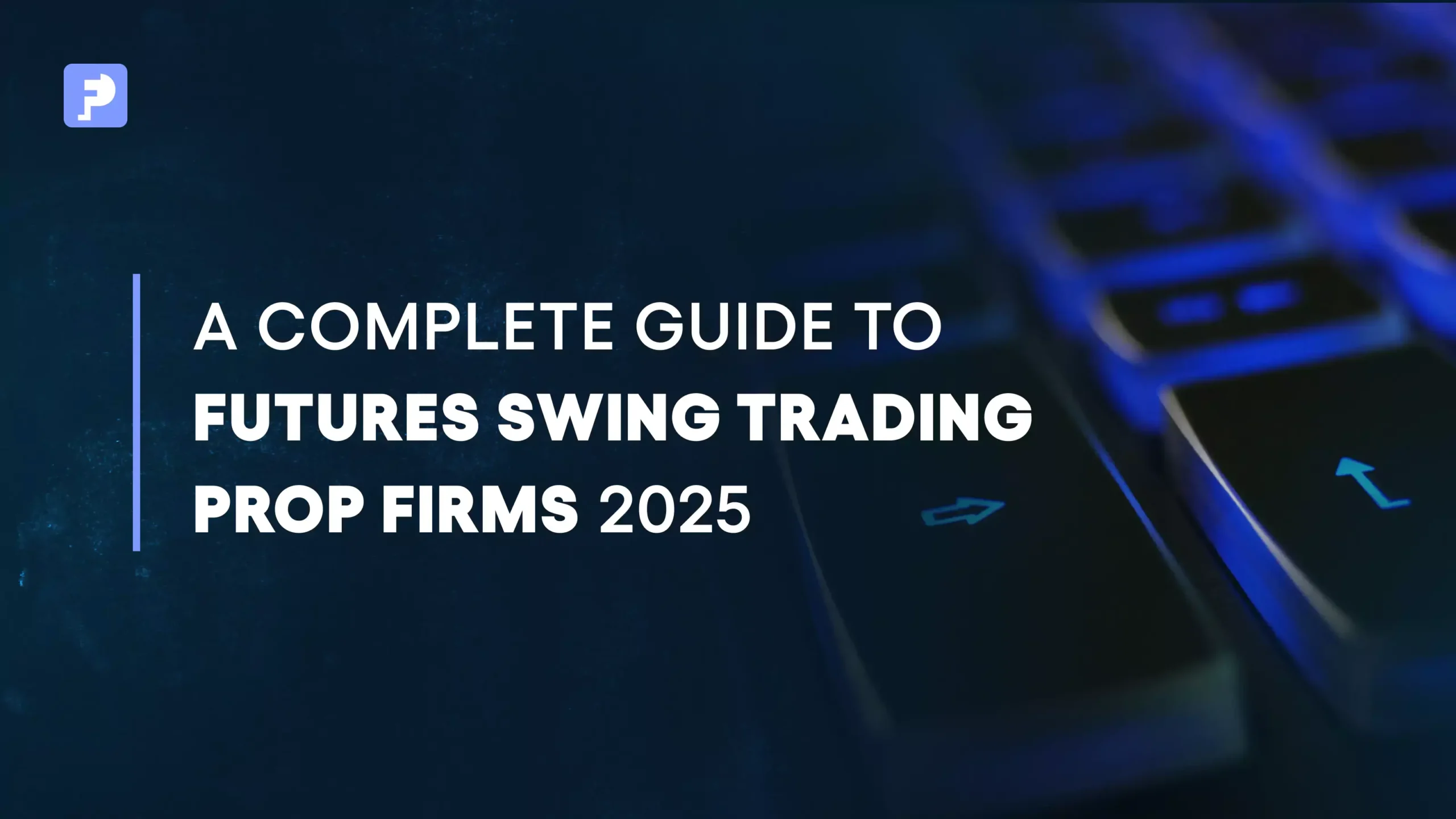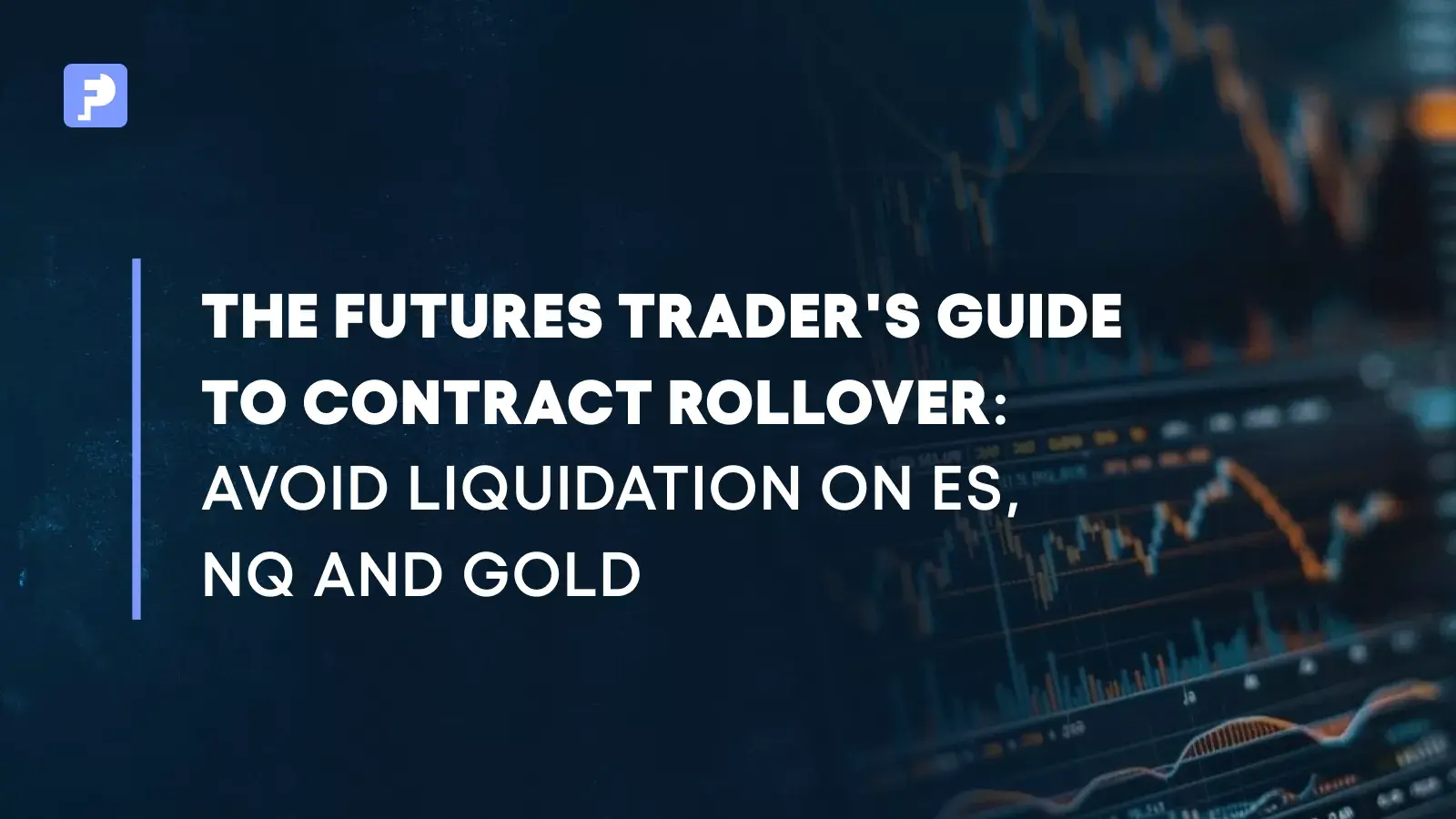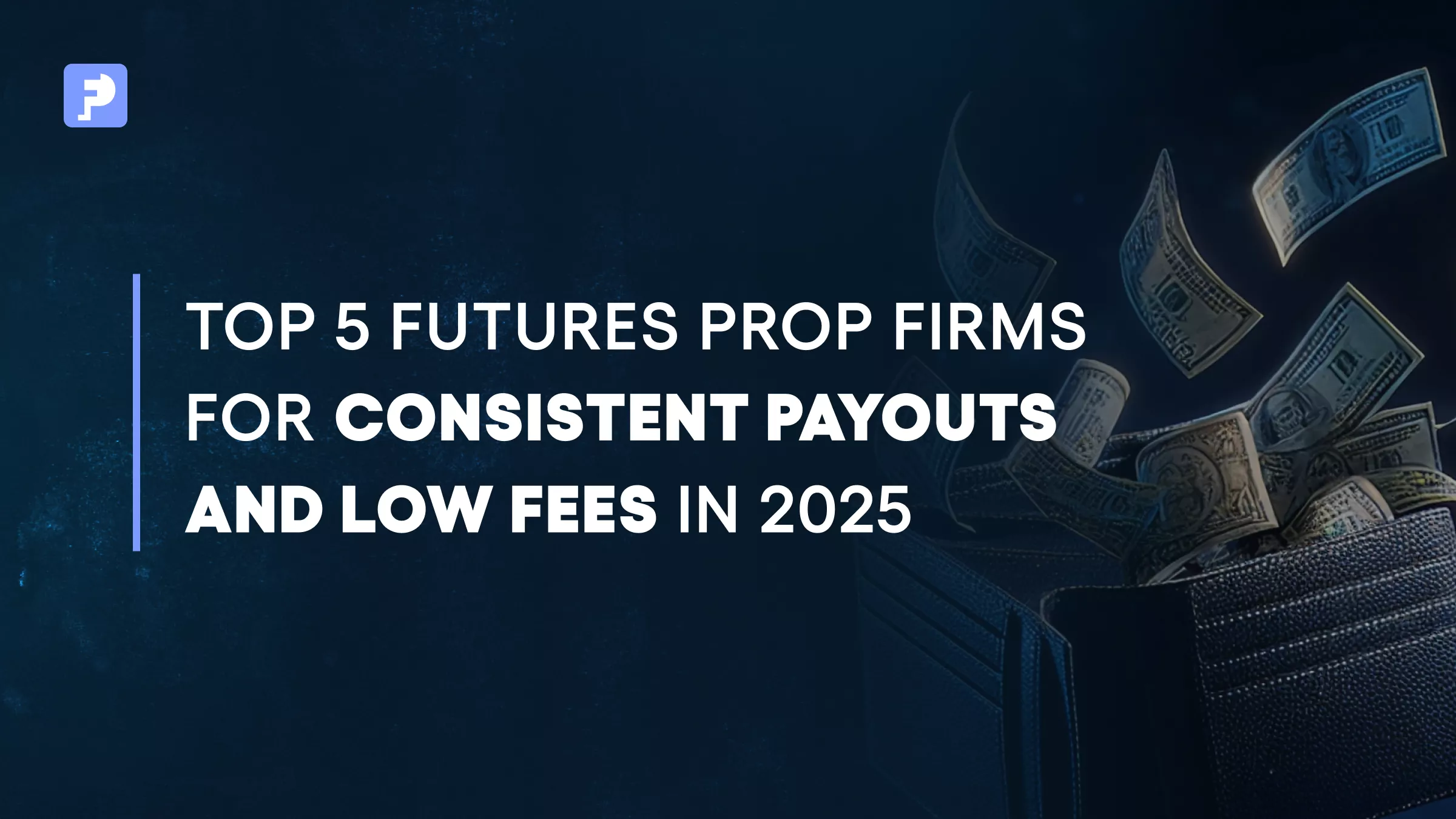
A Complete Guide to Futures Swing Trading Prop Firms in 2025
Swing Trading’s Momentum in 2025
Swing trading, holding futures positions overnight or for several days, has gained renewed traction in 2025. CME Group reported a record global average daily volume of 30.2 million contracts in Q2 2025, up 16% year over year (CME).
As more traders enter the market, prop firms are playing a bigger role by offering access to capital. But swing trading requires careful alignment with firm rules. Understanding how drawdowns, scaling, and rewards interact with longer holding periods is critical to staying funded.
What Is Futures Swing Trading?
Swing trading involves holding futures contracts for hours, days, or even weeks to capture medium-term price movements. Traders often use higher timeframes and technical or fundamental drivers such as macroeconomic events.
How it compares to other styles
| Trading Style | Holding Period | Trade Frequency | Key Trade-Offs |
|---|---|---|---|
| Scalping | Seconds to minutes | Very high | Small moves, high volume, higher costs |
| Day Trading | Minutes to hours | High | Intraday moves; fast execution |
| Swing Trading | Hours to several days | Low | Larger moves, fewer trades, more patience |
Why swing trading appeals
- Fewer trades mean lower commission costs.
- Time to focus on quality setups, not constant screens.
- Broader market perspective for bigger opportunities.
At the same time, volatility in 2025, driven by geopolitics, inflation, and AI adoption, means traders must manage risk carefully when holding positions overnight.
Why Swing Trading Fits Prop Firm Models
Prop firms value consistency and discipline. Swing trading aligns well when the firm’s structure supports it.
- Lower trade frequency means less risk of breaching daily limits.
- Larger capture zones help traders hit profit targets without excessive trading.
- Clearer rule alignment gives traders confidence in scaling once they prove consistency.
Still, overnight exposure and equity-based drawdowns can make swing trading more complex. Traders need to choose firms whose rules allow flexibility.
The Prop Firm Rules That Matter for Swing Traders
Drawdown Models
- End-of-Day (EOD) Drawdown: The account balance is checked at the end of each day. Intraday losses are allowed as long as the balance closes above the limit.
- Intraday Drawdown: Monitors equity in real time. A position moving against you during the day can trigger a violation, even if it recovers later.
- Trailing Drawdown: Moves up as your equity reaches new highs. At FunderPro Futures, the trail stops once equity returns to the starting balance, offering more room for swing strategies (FunderPro).
Scaling Plans
Scaling allows traders to increase size after proving consistency. For swing traders, this ensures contract growth happens in measured steps rather than sudden jumps.
Reward Models
Some firms stick to monthly or quarterly rewards. Others, like FunderPro Futures, offer a first reward after 5 trading days and then daily eligibility after 15 trading days (FunderPro). This is better suited for swing trading, where wins may come less often but in larger amounts.
Market Access
Swing traders benefit from liquid CME products such as the E-mini S&P 500 (ES), Crude Oil (CL), and Gold (GC). Mini and micro contracts offer flexibility and position sizing precision (CME Group).
Common Mistakes Swing Traders Make
- Ignoring overnight risk — news or events can cause gaps that exceed limits.
- Confusing equity vs balance — unrealized losses still count against drawdown.
- Overleveraging — too many contracts expose traders to amplified overnight swings.
- Weak personal risk rules — relying only on firm limits leads to early breaches.
- Correlation risk — trading multiple correlated futures like ES and NQ increases hidden exposure.
Traits of the Best Futures Prop Firms in 2025
- Transparent rules and clear drawdown structures.
- Swing-friendly models like capped trailing or EOD drawdowns.
- Reliable and frequent rewards.
- Structured, fair scaling plans.
- Wide product access.
- Professional support and trader-first policies.
Firms with hidden drawdown conditions, restrictive trading bans, or delayed rewards should be avoided.
A Balanced Example: FunderPro Futures
FunderPro Futures provides a model aligned with swing traders:
- Trailing drawdown capped at starting balance — prevents trailing into profits.
- Daily Rewards — first reward after 5 trading days; daily eligibility after 15 trading days.
- Structured scaling — clear progression tied to performance.
- Transparency — rules are published and easy to understand.
This design offers flexibility while keeping firm risk controls intact.
FAQ
Yes, but rules vary. Always check whether overnight holds are allowed and how drawdowns apply.
End-of-Day or capped trailing models are generally more suitable than intraday equity checks.
Yes. Flexible rewards systems help traders who may win less often but with larger moves.
Index, energy, and metal futures are liquid and widely used. Mini and micro contracts give swing traders better risk control.
Mismanaging overnight risk, ignoring equity drawdowns, and overleveraging are common causes.
Clear rules, capped trailing drawdown, and daily rewards help traders manage swing strategies without hidden traps.
Conclusion
Swing trading fits well within futures prop trading, but only if the firm’s structure supports it. Drawdown rules, rewards, and scaling matter just as much as strategy.
At FunderPro Futures, we provide clear rules, transparent rewards, and structured scaling plans so traders can swing trade with confidence. Start your challenge today.
All trading in FunderPro Futures takes place in a demo-style environment and in off-exchange futures.



